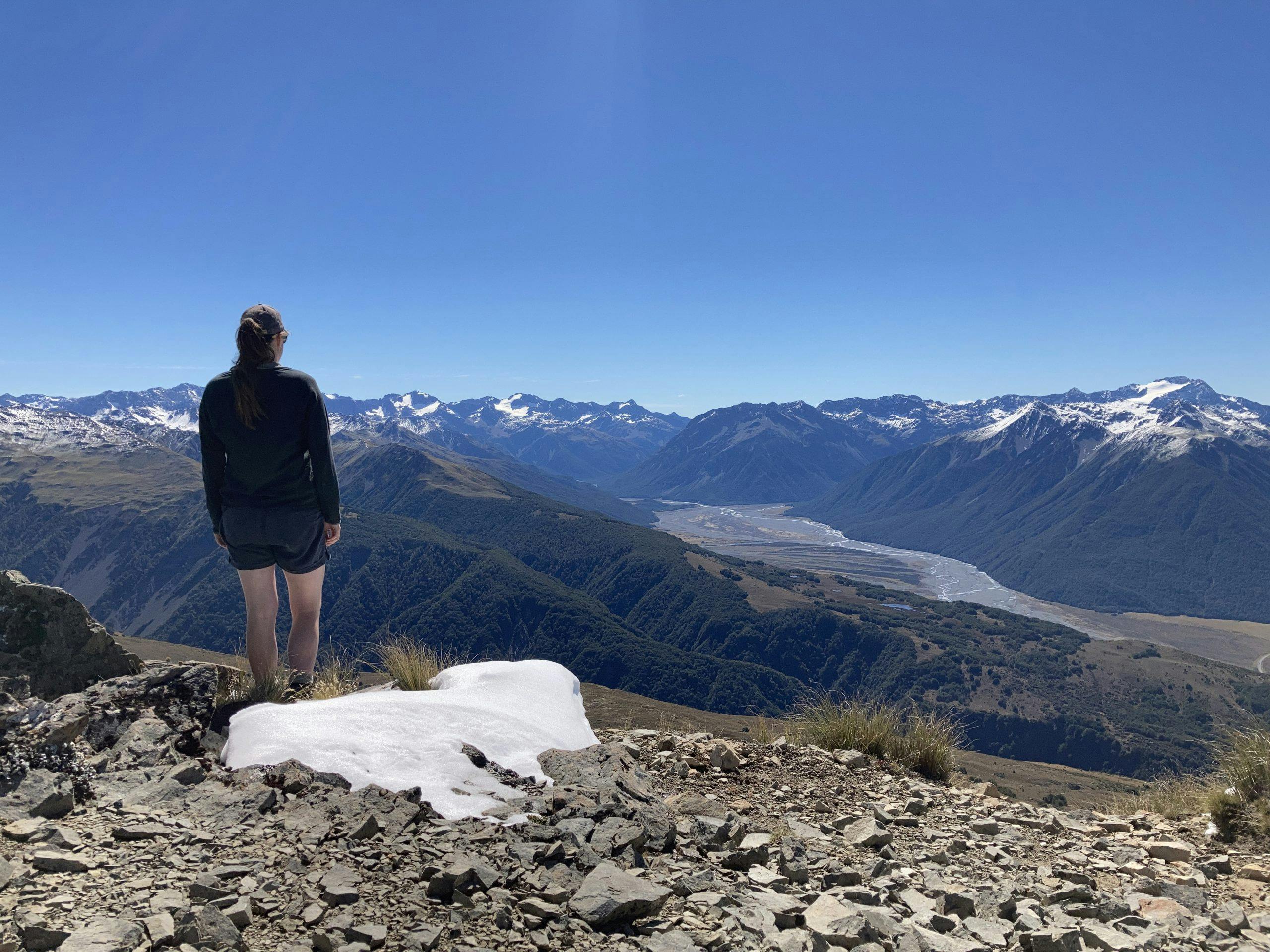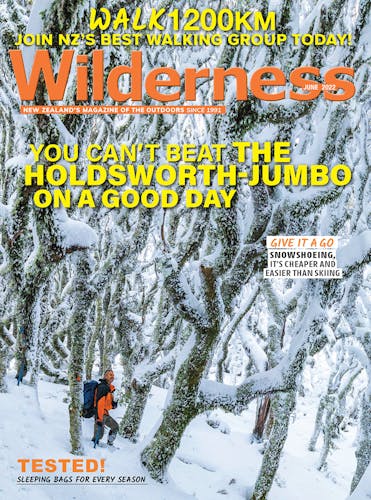A detour off Te Araroa Trail above Lagoon Saddle offers sweeping views of the Waimakariri River. By Anna Kristina
Above the Southern banks of the Waimakariri, the rounded summit ridge of Mt Bruce curves against the skyline. The bare, golden aspect of the northern face of Mt Bruce, known as Burnt Face, falls away to the trees below, disappearing from view as you proceed down Cora Lynn Road to the car park at the base of the hill.
Bealey Hut sits in a small clearing only a few minutes’ walk up the track. The well-maintained trail ascends through native forest, climbing gently through mountain beech for about 45min and crisscrossing small streams which race noisily down to join the braided Waimakariri River below.
Then suddenly, as though through a curtain, the beech trees give way to the sombre density of conifers. The sun drops through breaks in the solid mantle of the canopy, young fir saplings growing bright green in the slants of sunlight. But otherwise, the forest is dark and silent in contrast to the light and bird chatter of the beech forest.
When Burnt Face was cleared of native forest by runholders in the 1920s, the scree slopes were revealed. Then, the geology behind scree was poorly understood. The loose, eroding ground was thought to be the result of over-browsing by deer. The solution was to stabilise the face by replanting with fast-growing trees. Starting in the late 1940s, several species of exotic and native were trialled before it was partially planted with Douglas fir and Corsican pine. Today, efforts are being made to remove the plantation as part of the national programme of wilding conifer eradication.
Within a further 15-minutes, the bush is left behind as the open slopes of Burnt Face are reached. The track dips to cross a creek, running through a gulch beneath small rock bluffs. Directly below, you can see the road where it crosses Bruce Stream, the bridge, a tiny, fragile structure seen from here.
The most direct route to the summit is to climb the slope on the far side of this creek – its true left – but the face’s open nature allows endless route options. The unmarked tussock slope is interspersed with patches of loose, soft scree. A wide, relatively flat summit ridge offers ample opportunity to stop and enjoy the view.
And it is quite a view. The face just climbed falls away to the track below. Across Bruce Stream, the tarns on Bealey Spur are visible. With binoculars, you might be able to see walkers climbing the open ridge from Bealey Spur Hut. Kilometres of the Waimakariri are spread below, from the turn of the river as it tracks down from its northern headwaters to where it bends south-east below Mt Binser. The triple crown of the peaks of Bealey, Lyall and Avalanche dominates the centre of the frame, Arthur’s Pass Village is just visible in an opening between the spurs that descend to the Bealey River.
This view has been slowly revealing itself during the climb of Mt Bruce but from the summit, a new aspect is revealed to the south. There is a feeling of being in the midst of the mountains. Ahead is the Black Range, to the west the Grey Range, sharp stone peaks receding into the distance. Between the two, the Harper River winds south toward Hamilton Hut on Te Araroa Trail.
Return via the same route or by descending the western slopes of Mt Bruce and rejoining the track further along Burnt Face.
- Distance
- 4.12km to the summit
- Total Ascent
- 950m
- Grade
- Moderate
- Time
- 5-6hr return
- Accom.
- Bealey Hut ($5, six bunks)
- Access
- Cass-Lagoon Track car park, Cora Lynn Road end, off SH73
- Map
- BV20
GPX File
- Mt Bruce (gpx, 4 KB)
GPX File
- Your device does not support GPX files. Please try a different device.







